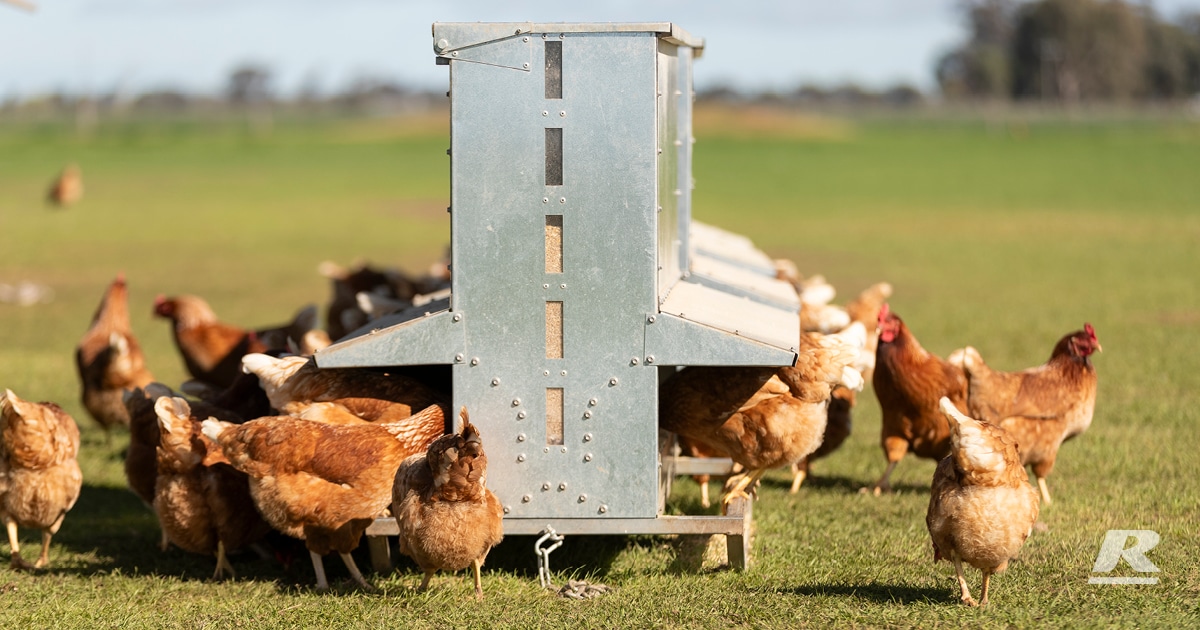Low Feed Intakes in Early Lay Constrain Egg Production
The ability to achieve a high peak production in layer flocks have been promoted by the breeding companies for decades as being determined by the flock’s body weights and the evenness or uniformity of the flock. Recent research conducted in Australia by Australian Eggs shows that low growth rates and “most importantly low feed intakes” in the transition from the pullet (16 weeks) to the peak at 26-28 weeks of age, is one of the most important factors that not only determines the magnitude of the peak production, but also the ability of the flock to sustain the peak and the flock longevity.
In the past we have assumed that body weight and energy density of the feed and shed temperature determined the feed intake in this critical period (16-28 weeks of age), but new research now indicates that there are other important but poorly understood sources of variation in feed intake.
Flushes of feed intake have been demonstrated to occur in pullets as they come into lay, but the converse is also true, where management practices and social behaviour can suppress feed intake in this critical period.
On farm research over the last 20 years has indicated that many cage flocks have feed intakes significantly below the standards prescribed by the breeders for birds at these ages, and the situation is much worse in many floor-based systems, where intakes can be 10-20 grams less than the recommended. With average feed intakes that can be 5-10 grams/ bird per day less than breeder recommendations, there are sub-populations of birds ingesting levels very much below breed standards.
New research from Sydney University indicates that the modern brown egg layer is capable of performances “Well above” the breed standards, and that nutritionists need to ensure that more nutrients are ingested by the modern bird is this critical period.
A review of nutrient requirements in early lay is definitely justified as the industry strives for higher and longer production performances.
Until then, close monitoring of actual feed intakes between 16-28 weeks of age is essential to understanding the factors affecting feed intake on an individual farm.
However, some producers have introduced an increase in the nutrient density of feed (“up specking”) to compensate for the nutrient deficiencies that will arise in a flock if feed intake is not optimal.
The flushing of nutrients into birds and flocks at this age is a critical determinant of the peak, longevity of the peak, the persistency of production and the ability to maintain late shell quality.
In the future more systematic analysis will be required on methods to stimulate feed intakes, more research on nutritional requirements, and a close examination of managerial practices that constrain intakes. Management practices such a flock-movements, competitive stress, feeder space and perhaps shed densities are being suggested as factors that are likely to influence feed intake.
In the interim, if producers record moderately lower feed intakes than the breed standards (5-10 grams less) between 16-28 weeks of age, they may consider significant “Up Specking” of diets. It is highly likely that the costs of the more expensive diets will be more than recovered by significant improvements of both peak production and persistency of production.
To find out more about such diets and feeding regimes we are always willing to discuss this new research and with you. Contact us today to explore our range of specialised chicken feed products designed to support your flock’s wellbeing. Call 1300 REID FEED or enquire here >
Author
Dr. Greg Parkinson
Livorno Consulting
Johnny Barwary
Monogastric Manager
